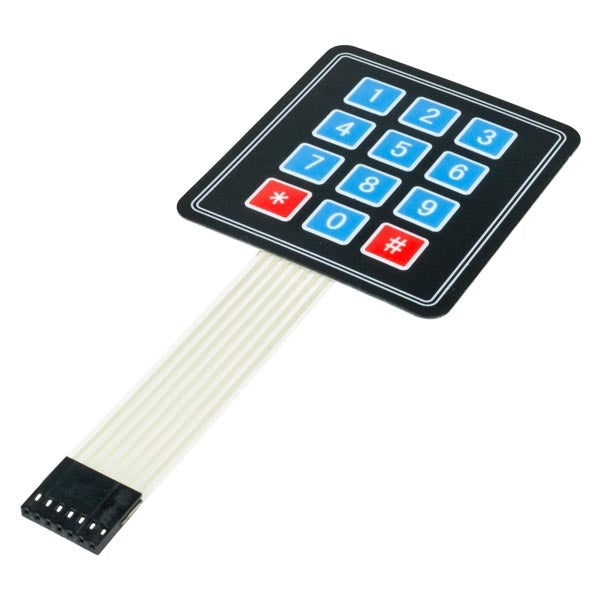Recognizing Membrane Switches Over: The Secret to Resilient and Dependable Controls

What Are Membrane Layer Switches?
Membrane layer buttons are a sophisticated option in the realm of interface innovation, incorporating capability and design perfectly. These tools work as an interface between users and electronic systems, integrating a number of components into a small style. Normally created from adaptable, thin layers of materials, membrane buttons are designed to react to touch, allowing customers to connect with equipment and digital tools properly.
The key elements of a membrane switch consist of a published circuit layer, visuals overlay, and a spacer layer that stops unexpected activation. The graphic overlay can be customized to reflect brand name identification or individual preferences, improving visual appeals while guaranteeing usability. Membrane buttons are frequently made use of in numerous applications, consisting of medical devices, customer electronic devices, and industrial equipment, owing to their resilience and resistance to environmental variables such as wetness and dust.
Among the vital benefits of membrane layer switches is their capacity to stand up to deterioration, making them perfect for high-traffic environments. Additionally, they are light-weight and require marginal area, permitting innovative layouts in item development. On the whole, membrane switches over represent a reliable and useful selection for contemporary digital user interfaces, marrying modern technology with user-centric design concepts.
How Membrane Layer Switches Job
The procedure of membrane switches rest on a straightforward yet effective mechanism that converts individual input right into electronic signals. These buttons include numerous layers, normally including a graphic overlay, a spacer layer, and a circuit layer. When a customer presses the switch, the top layer deforms, permitting a conductive element in the circuit layer to make call with a corresponding conductive pad on the underside of the visuals overlay. This contact shuts the circuit and sends out an electronic signal to the gadget, showing that the switch has been turned on.
The layout of membrane layer switches can vary, however they often incorporate domes or tactile aspects to provide feedback to the individual, enhancing the general experience - membrane switch. The products utilized in membrane layer buttons, such as polyester or polycarbonate, add to their toughness and resistance to ecological variables, consisting of dampness and dust. Additionally, the published circuits are usually enveloped, which shields them from wear and tear with time.
Advantages of Membrane Layer Switches

Furthermore, membrane buttons are understood for their durability. Built from durable products, they are resistant to dirt, dampness, and physical wear, which significantly extends their lifespan compared to traditional mechanical switches. This sturdiness makes them especially ideal for high-traffic environments and applications needing durability.
Another substantial advantage is the simplicity of cleansing and upkeep. The smooth surface area of membrane layer switches over decreases dirt build-up and is usually resistant to spills, making them optimal for settings that require regular sanitization.
Moreover, membrane switches use a streamlined profile, resulting in a thinner design that can be incorporated into numerous devices without adding mass. This feature not just boosts the aesthetic charm but additionally adds to a much more ergonomic product design.
Applications of Membrane Layer Buttons
Flexible and easy to use, membrane switches locate applications throughout a wide variety of markets, consisting of clinical tools, consumer electronics, and commercial tools. In the clinical field, these switches are important to tools such as diagnostic devices, patient surveillance systems, and infusion pumps, where reliability and convenience of cleansing are essential. Their ability to preserve and hold up against extreme settings functionality makes them excellent for such applications.

In customer electronics, membrane layer buttons are utilized in products like microwaves, cleaning makers, and remote controls - membrane switch. Their smooth layout permits user-friendly user interfaces, improving the general individual experience while providing resilience and resistance to tear and put on
Industrial devices also benefits from membrane switches, particularly in control panels for machinery and automation systems. These switches supply defense versus dust and dampness, making sure regular efficiency in challenging environments. In addition, their personalized attributes permit producers to customize them to certain operational requirements, boosting effectiveness and functionality.
Picking the Right Membrane Change
When picking a membrane layer switch, it is vital to take into consideration various aspects that influence efficiency and viability for particular applications. The main considerations consist of environmental conditions, tactile feedback, resilience, and style specs.
First, assess the operating setting; switches exposed to wetness, chemicals, or extreme temperature levels call for particular materials to ensure durability and functionality. Next, examine the need for tactile responses. Relying on user communication, some applications try this website might take advantage of a tactile reaction to validate activation, while others may choose a non-tactile style for aesthetic reasons.
Durability is one official source more important element; membrane buttons should be created to hold up against frequent use, influences, and abrasion. Make certain the picked button can sustain the anticipated lifecycle, specifically in high-usage scenarios.

Conclusion
In final thought, membrane switches serve as crucial components in the design of sturdy and trusted control systems across different sectors. The adaptability of membrane switches permits for customized options that satisfy particular functional requirements, strengthening their value in modern technology.
Membrane switches over represent an essential aspect of modern interface style, blending capability with strength in numerous applications.Membrane switches are an advanced remedy in the world of customer interface technology, combining functionality and layout seamlessly. Usually built from adaptable, slim layers of products, membrane layer buttons are developed to react to touch, allowing individuals to engage with equipment and digital gadgets successfully.
The style of membrane layer buttons can differ, however they commonly integrate domes or responsive aspects to offer comments to the user, boosting the total experience.In verdict, membrane layer changes offer as necessary parts in the style of durable and trustworthy control systems across various industries.
Comments on “Explore the Benefits of Using a Membrane Switch in Modern Devices”